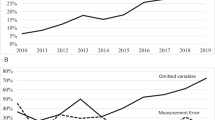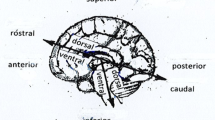Abstract
Negishi’s remarkable youthful contribution to welfare economics, general equilibrium theory and, with the benefit of hindsight, also to one strand of computable general equilibrium theory, all within the span of six pages in one article, has become one of the modern classics of general equilibrium theory and mathematical economics. Negishi’s celebrated theorem and what has been called Negishi’s Method have formed one foundation for computable general equilibrium theory. In this paper I investigate the computable and constructive aspects of the theorem and the method.
Similar content being viewed by others
Notes
Just for ease of reading the discussion in this section I state, here, the simplest possible statement of this theorem:
Bolzano–Weierstrass Theorem: Every bounded sequence contains a convergent subsequence.
The word ‘contains’ encapsulates the many non-constructive and uncomputable disjunctions that make this theorem a quintessentially ‘classical’ pure existence theorem, with no algorithmic content.
This is one of the key intuitionistically defined concepts, underpinning the construction of counter-examples, generating the continuum, justifying the infinite, and so on. The other foundational concepts, in addition to the fleeing property, of intuitionistic constructivism are: choice sequences, spreads, species, fans and the creative subject. These concepts also justify Brouwer’s fundamental stance on a languageless and logicless mathematics.
The point here is the role of the Bolzano–Weierstrass theorem and its intrinsic undecidable disjunctions, which make any theorem invoking it in its proof fundamentally non-constructive and uncomputable from any (known) constructive or computable mathematical point of view.
In Scarf (1982), p. 1024 (italics added), Scarf is more precise about the reasons for the failure of constructivity in the proof of Brouwer’s fix point theorem:
In order to demonstrate Brouwer’s theorem completely we must consider a sequence of subdivisions whose mesh tends to zero. Each such subdivision will yield a completely labeled simplex and, as a consequence of the compactness of the unit simplex, there is a convergent subsequence of completely labeled simplices all of whose vertices tend to a single point \(x^{*}.\) (This is, of course, the non-constructive step in demonstrating Brouwer’s theorem, rather than providing an approximate fixed point).
There are three points to be noted: first of all, even here Scarf does not pinpoint quite precisely the main reason for the cause of the non-constructivity in the proof of Brouwer’s theorem; secondly, nothing in the construction of the algorithm provides a justification to call the value generated by it to be an approximation to \(x^{*}\). In fact the value determined by Scarf’s algorithm has no theoretically meaningful connection with \(x^{*}\) (i.e., to \(p^{*}\)) for it to be referred to as an approximate equilibrium. Thirdly, the notion of compactness characterizing the unit simplex is non-constructive.
To demonstrate the nonconstructive elements of Theorem 1 (ibid, p. 5), I would need to include almost a whole tutorial on constructive mathematics to make clear the notion of compactness that is legitimate in constructive analysis.
Slater (1950) must easily qualify for inclusion in the class of pioneering articles that remained forever in the ‘samizdat’ status of a Discussion Paper!
I should add that the applied general equilibrium theorists who use Negishi’s method to ‘compute’ (uncomputable) equilibria do not seem to be fully aware of the implications of some of the key assumptions in Slater’s complementary slackness conditions. That Negishi (1960) is aware of them is clear from his Assumption 2 and Lemma 1.
This is not a strictly accurate statement, although this is the way many advanced books on functional analysis tend to present the Hahn–Banach theorem. For a reasonably accessible discussion of the precise dependency of the Hahn–Banach theorem on the kind of axiom of choice (i.e., whether the countable axiom of choice or the axiom of dependent choice), see Narici and Beckenstein (1997). For an even better and fuller discussion of the Hahn–Banach theorem, both from ‘classical’ and a constructive points of view, Schechter’s encyclopedic treatise is unbeatable (Schechter 1997).
However, it must be remembered that Ishihara (1989), has shown the constructive validity of the Hahn–Banach theorem also for uniformly convex spaces.
References
Bridges, D., & Richman, F. (1987). Varieties of constructive mathematics. Cambridge: Cambridge University Press.
Brouwer, L. E. J. (1910). Über eineindeutige, stetige Transformationen von Flächen in sich. Mathematische Annalen, 69, 176–180.
Brouwer, L. E. J. (1952). An intuitionist correction of the Fixed-Point Theorem on the sphere. In Proceedings of the Royal Society, Series A. vol. 213 (pp. 1–2) June 5, 1952.
Cheng, H. H. C. (1991). Asset market equilibrium in infinite dimensional complete markets. Journal of Mathematical Economics, 20(1), 137–152.
Cooper, S. B. (2004). Computability theory. Boca Raton, FL: Chapman & Hall/CRC.
Ishihara, H. (1989). On the constructive Hahn–Banach Theorem. Bulletin of the London Mathematical Society, 21, 79–81.
Kakutani, S. (1941). A generalization of Brouwer’s Fixed Point Theorem. Duke Mathematical Journal, 8(3), 457–459.
Luenberger, D. G. (1994). Optimality and the theory of value. Journal of Economic Theory, 63(2), 147–169.
Narici, L., & Beckenstein, E. (1997). The Hahn–Banach Theorem. Topology and its Applications, 77, 193–211.
Negishi, T. (1960). Welfare economics and existence of equilibrium for a competitive economy. Metroeconomica, XII, 92–97. (Reprinted from Chapter 1, pp. 3–8, by T. Negishi, 1994).
Negishi, T. (1961). Monopolistic competition and general equilibrium. Review of Economic Studies, 28(3), 196–201.
Negishi, T. (1994). General equilibrium theory—The collected essays of Takashi Negishi (Vol. 1). Alershot, Hants, UK: Edward Elgar.
Negishi, T. (2008). Unnoticed predecessors of the early Negishi Theorems. International Journal of Economic Theory, 4(2), 167–173.
Posy, C. J. (2005). Intuitionism and philosophy. In S. Shapiro (Ed.), The Oxford handbook of philosophy of mathematics and logic, chap. 9 (pp. 318–355). Oxford: Oxford University Press.
Richman, F. (1990). Intuitionism as generalization. Philosophia Mathematica, 5, 124–128.
Scarf, H. (1973). The computation of economic equilibria (with the collaboration of Terje Hansen). New Haven, CT: Yale University Press.
Scarf, H. E. (1982). The computation of equilibrium prices: An exposition. In K. J. Arrow & M. D. Intrilligator (Eds.), Handbook of mathematical economics, chap. 21 (pp. 1007–1061). Amsterdam: North-Holland Publishing Company.
Schechter, E. (1997). Handbook of analysis and its foundations. San Diego, CA: Academic Press.
Slater, M. (1950). Lagrange multipliers revisited. Cowles Commission Discussion Paper. Mathematics # 403. November 7, 1950.
Starr, R. M. (2011). General equilibrium theory: An introduction (2nd ed.). Cambridge: Cambridge University Press.
Uzawa, H. (1962). Walras’ Existence Theorem and Brouwer’s Fixed Point Theorem. The Economic Studies Quarterly, 8(1), 59–62.
von Neumann, J. (1937, [1945–1946]). A model of general economic equilibrium. The Review of Economic Studies, 13(1), 1–9.
Young, W. (2008). Negishi’s contributions to the development of economic analysis: Research programs and outcomes. International Journal of Economic Theory, 4, 151–165.
Author information
Authors and Affiliations
Corresponding author
Additional information
This paper is written in homage to two of the most important contributions to the foundations of computational aspects of economic theory and mathematical economics: Negishi (1960) and Uzawa (1962). Almost nothing in computable general equilibrium (CGE) theory, and its many and varied applied variants, would be possible without the results in these two classics, in addition to the pioneering works by Scarf (1973). I suspect a reasonable ‘tutorial’ on the elements of computability theory and constructive mathematics—in the sense in which they are provided in, say, Cooper (2004) or Bridges and Richman (1987)—is a necessary prerequisite for a full substantiation of the arguments in this paper. The best I can do, in the face of space constraints for an article, is to provide occasional footnote comments, and leave the rest for the ‘interested reader’ to consult specialized texts such as the two cited above. I am greatly indebted to an anonymous referee’s wholly positive appraisal of the first draft of the paper, the Editor’s encouragements and the constant help and advice of my ASSRU colleagues, Professor Stefano Zambelli, Dr. Selda Kao and Dr. Ragu Ragupathy. They are all, of course, absolved from any remaining infelicities in the paper.
Rights and permissions
About this article
Cite this article
Velupillai, K.V. Negishi’s Theorem and Method: Computable and Constructive Considerations. Comput Econ 45, 183–193 (2015). https://doi.org/10.1007/s10614-013-9416-5
Accepted:
Published:
Issue Date:
DOI: https://doi.org/10.1007/s10614-013-9416-5
Keywords
- Computable general equilibrium
- Fundamental theorems of welfare economics
- Negishi’s theorem
- Negishi’s method




